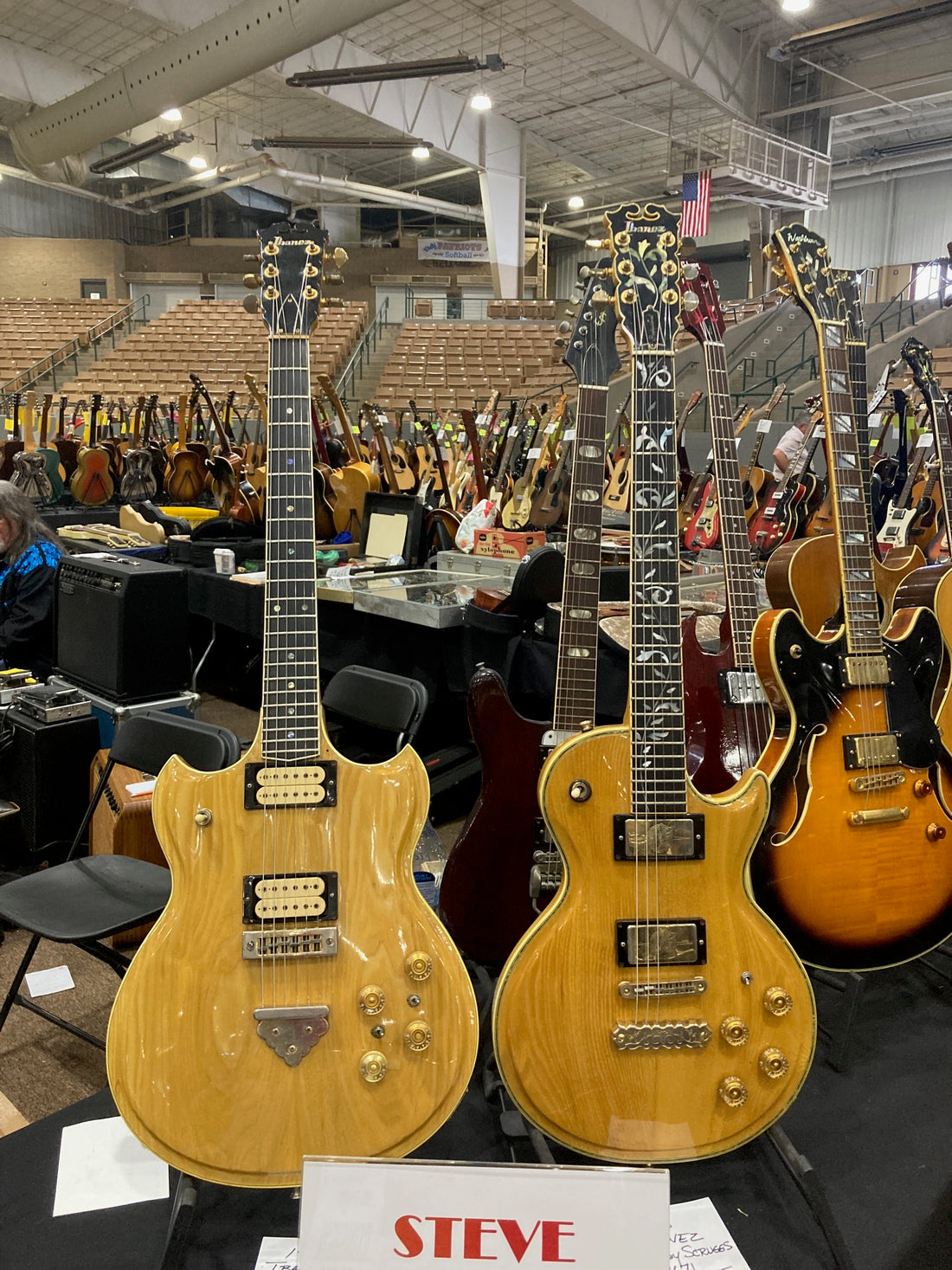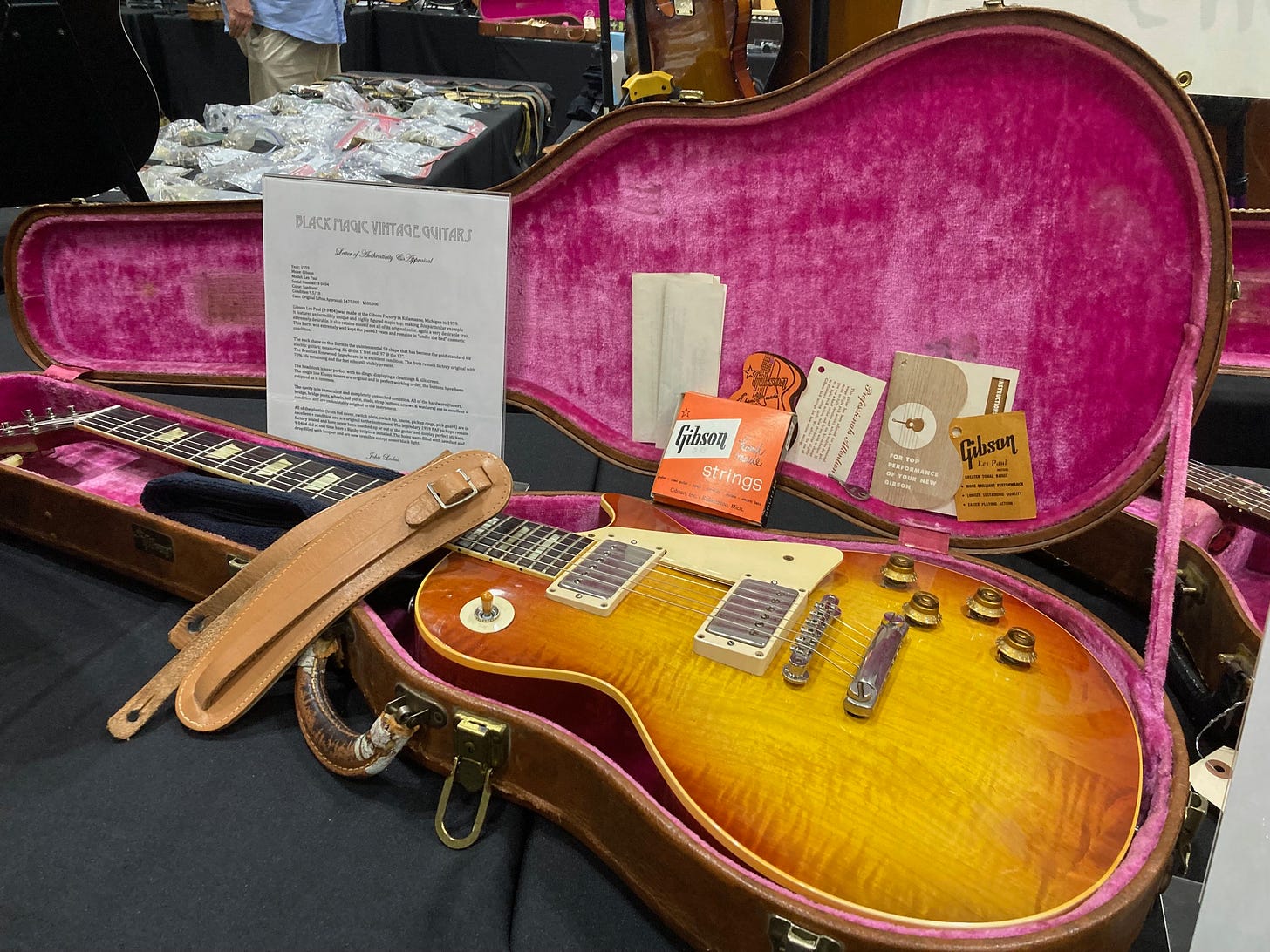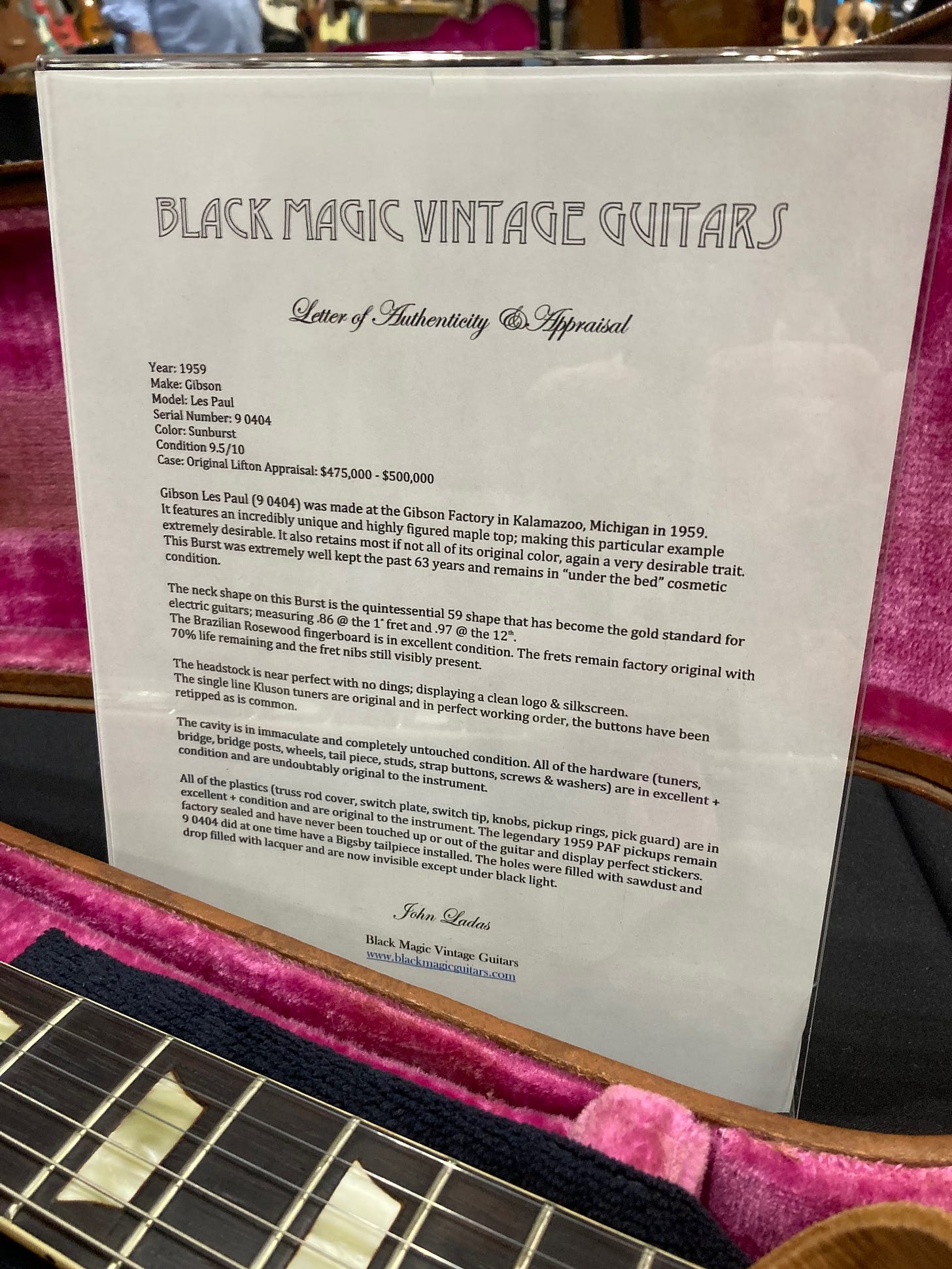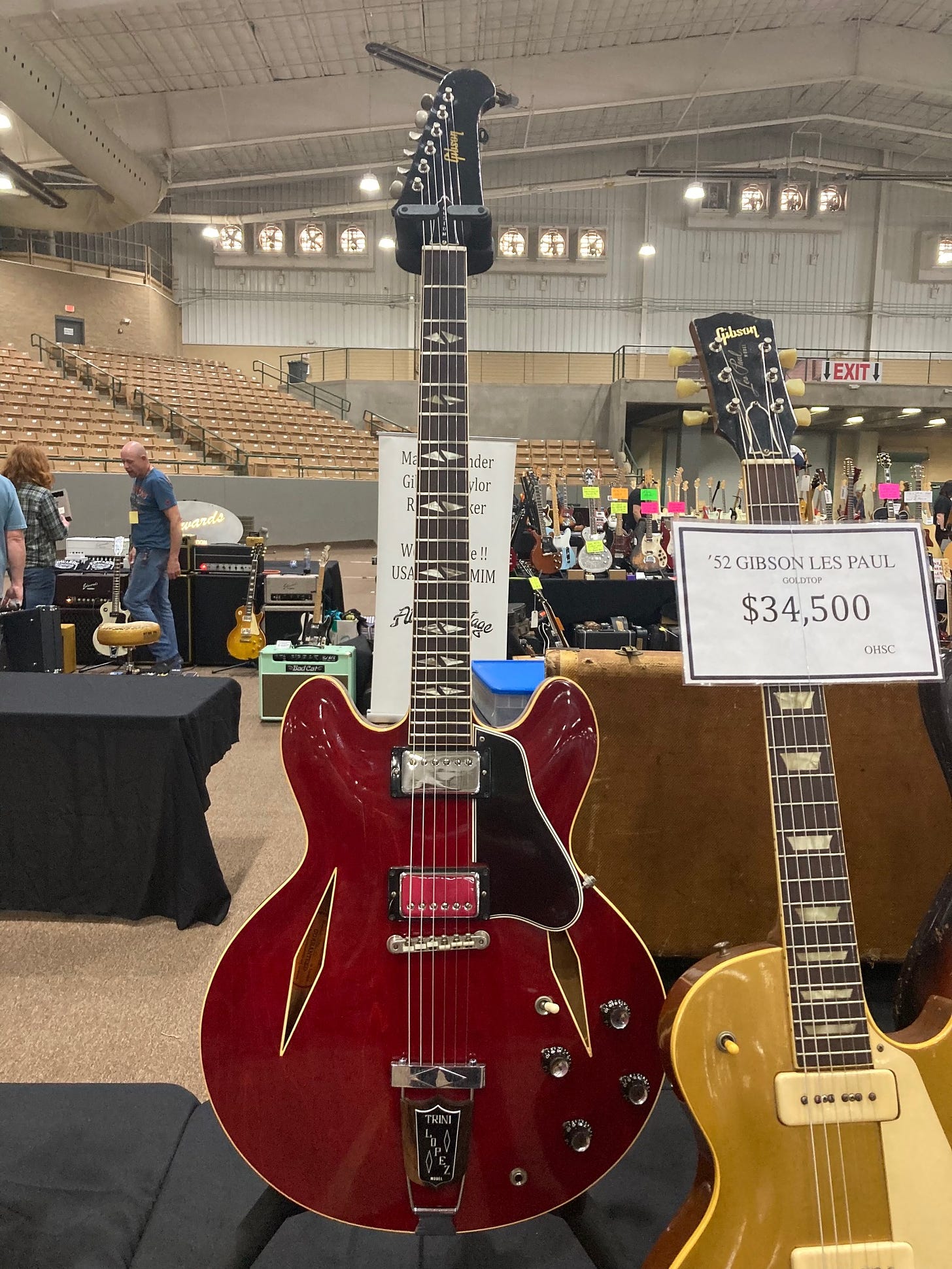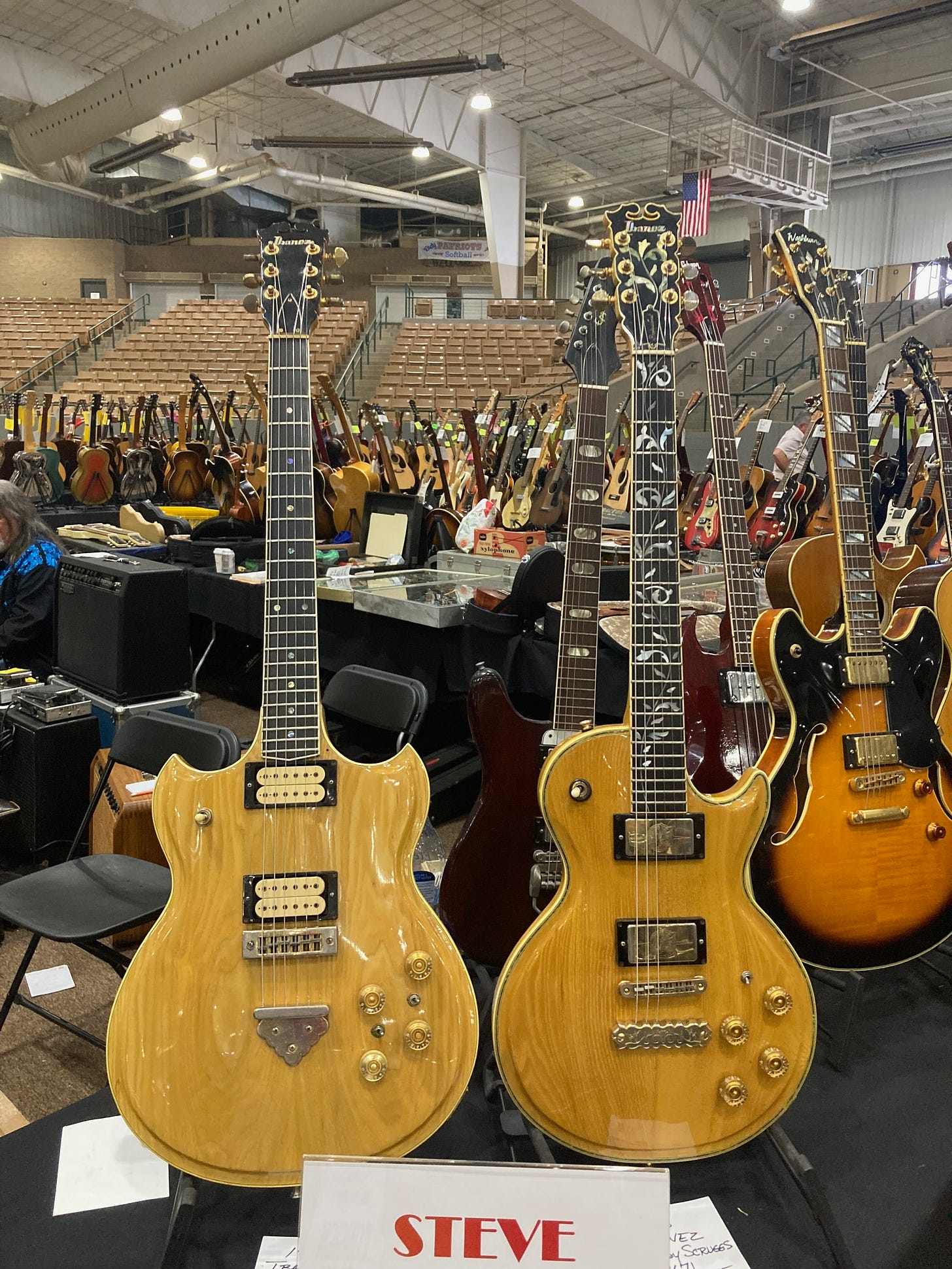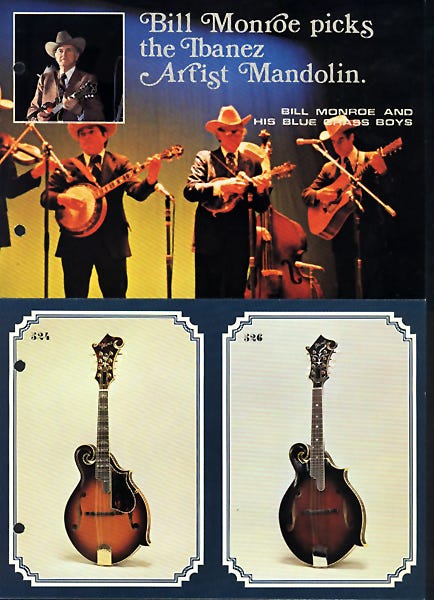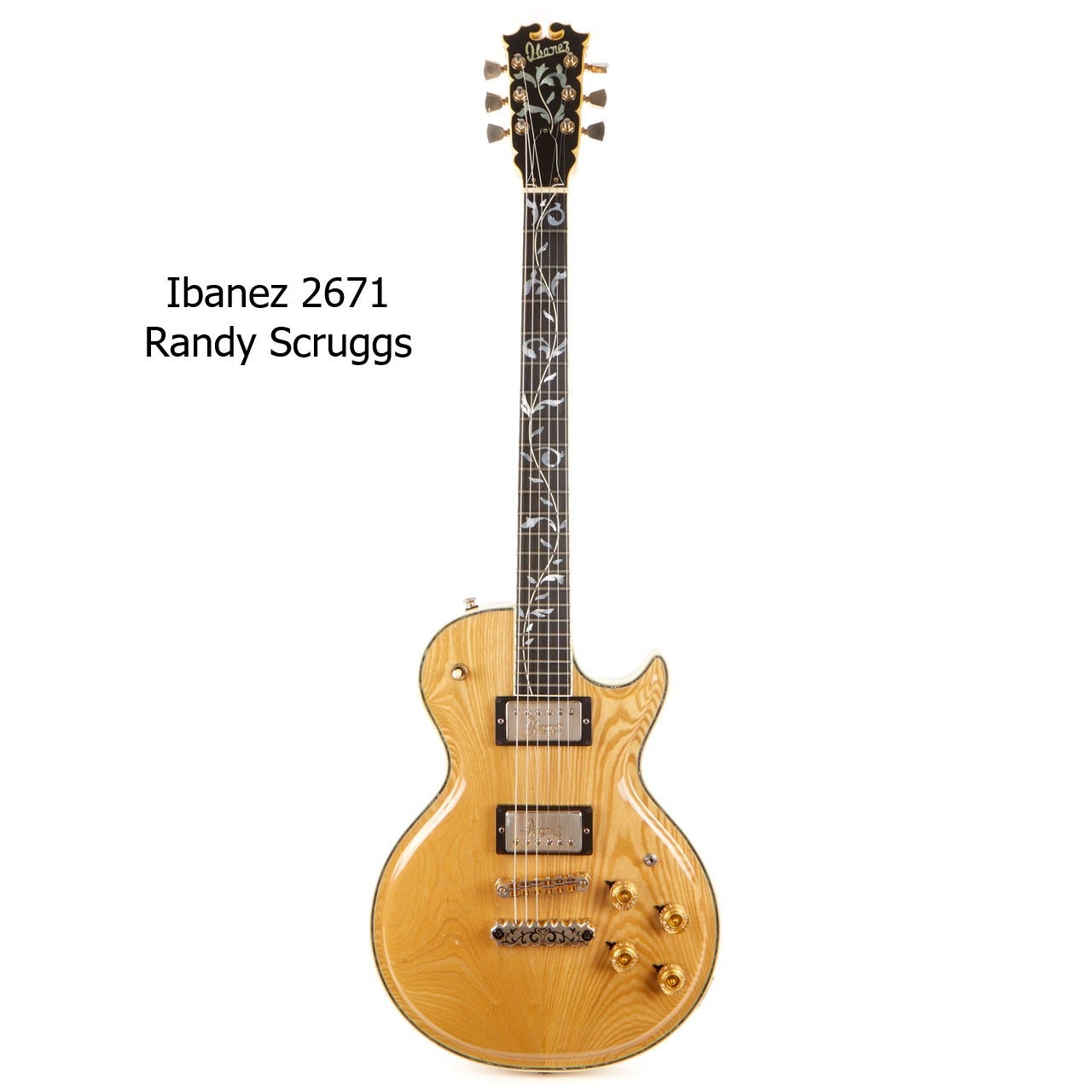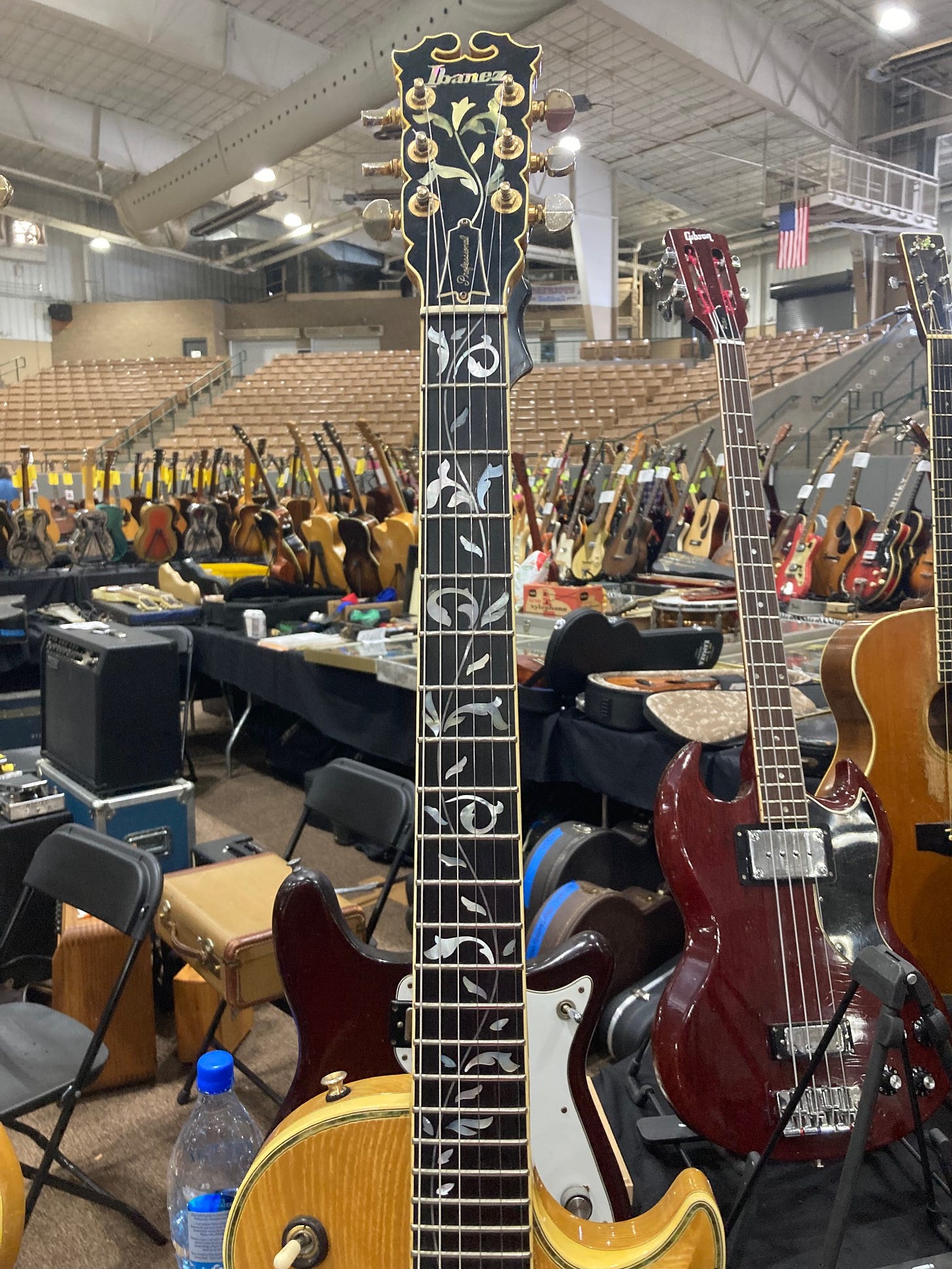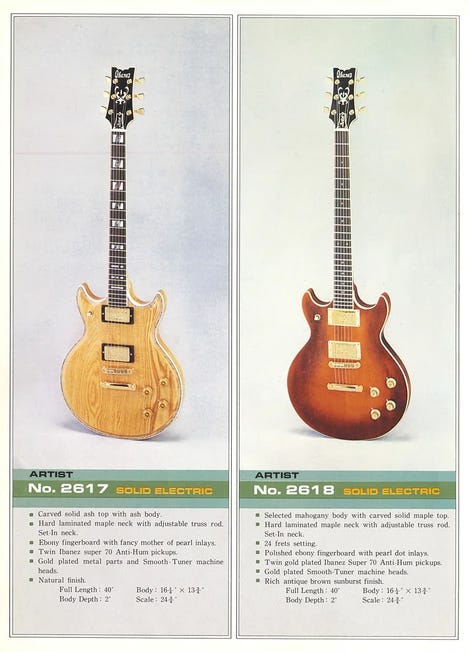Guitar Gavel Lick Of The Week with Adam Gray
Adam provides a wonderful lesson on Sting’s “Shape Of My Heart”. Such a beautiful song, and a delightful fingerpicking exercise. Thank you Adam for your precise tutorial and making this a very approachable song. WARNING: requires some hand stretches… before you do the stretches.
It’s late Monday night, the day before you receive the newsletter, and I’m fresh off the road from Nashville visiting the Amigos Guitar Show this past weekend. I met a ton of great people and drooled over some amazing guitars, but I’ll be the first to admit that after seeing a gazillion Strats and Les Pauls they really become watered down in my eyes. That’s a polite way of saying they get boring. Fender and Gibson purists may find those remarks repulsive, and I may have just lost a few subscribers :-), so to save face I’ll first post some incredible Gibson eye-candy. However, I’m generally on the lookout for less mainstream guitars, not necessarily the oddballs, but guitars that are somewhat off the beaten path so the highlight of this issue is a couple of smokin’ early Ibanez signature models which we’ll get to quickly. But first… a 1959 Les Paul burst being offered at $475,000.
Next, an immaculate Trini Lopez Standard (I think it was 1968). Priced somewhere in the $10,000-$12,000 range.
Now onto the Ibanez guitars that really strummed a chord. The Bob Weir Standard and Randy Scruggs. Bob Weir was the first Ibanez endorsed artist with his model 2680 in 1975. Ibanez followed-up signature models for George Benson in 1977 and Paul Stanley in 1978. All of their guitars were original designs and marked the beginning of Ibanez’ departure from the copy guitar game. Side note- the Paul Stanley Iceman was first introduced in 1975 with his name being attached to the guitar in 1978.
A lesser known Ibanez electric from the same era was the Randy Scruggs model 2671. Randy is the middle son of Earl Scruggs.
Why Randy Scruggs?
Internet rumors suggest Ibanez was courting his dad for a banjo deal which is plausible. In 1975 Ibanez made a few f-style mandolins for Bill Monroe. The extent of Bill’s involvement is questionable, but Ibanez did manage to take pictures of Bill playing one and use them in a few advertisements.
Randy’s signature guitar first appeared alongside Weir’s in the 1976 Ibanez Professional catalog. Unlike his contemporaries, Scrugg’s guitar was essentially a Les Paul copy.
Or it was essentially the single cut companion to Weir’s (pictured from the show is the Standard with dot inlays, model 2680). Both were ash bodies with a German carve and exhibited the ornate “vine of life” mother of pearl fret inlay that extended into the scroll headstock. Randy’s 2671 sported two Super 70 humbuckers and a phase switch.
Two years later in 1977 Ibanez trotted out the 2671S, no phase switch, split block inlays and Super 80 humbuckers. The model was short-lived and discontinued after 1978. Various versions included a harmonica bridge and cloud tailpiece, but the carved ash body remained.
Ibanez 2671 specs: Ash body, Set maple neck, Ebony fretboard, MOP vine inlay, Super 70 humbuckers, 3-way selector, Phase switch, Two volume, two tone controls
Seeing both of these guitars side-by-side was impressive and the Scruggs is the standout of the two in my opinion. Historically speaking, the Weir model, exhibiting the shallow symmetrical double cuts was the first incarnation of Ibanez’ Artist series guitars that debuted a year later in 1976. That style (shown below) was the basis for Weir’s Cowboy Fancy and the epitome of Ibanez style before the 1980s.

